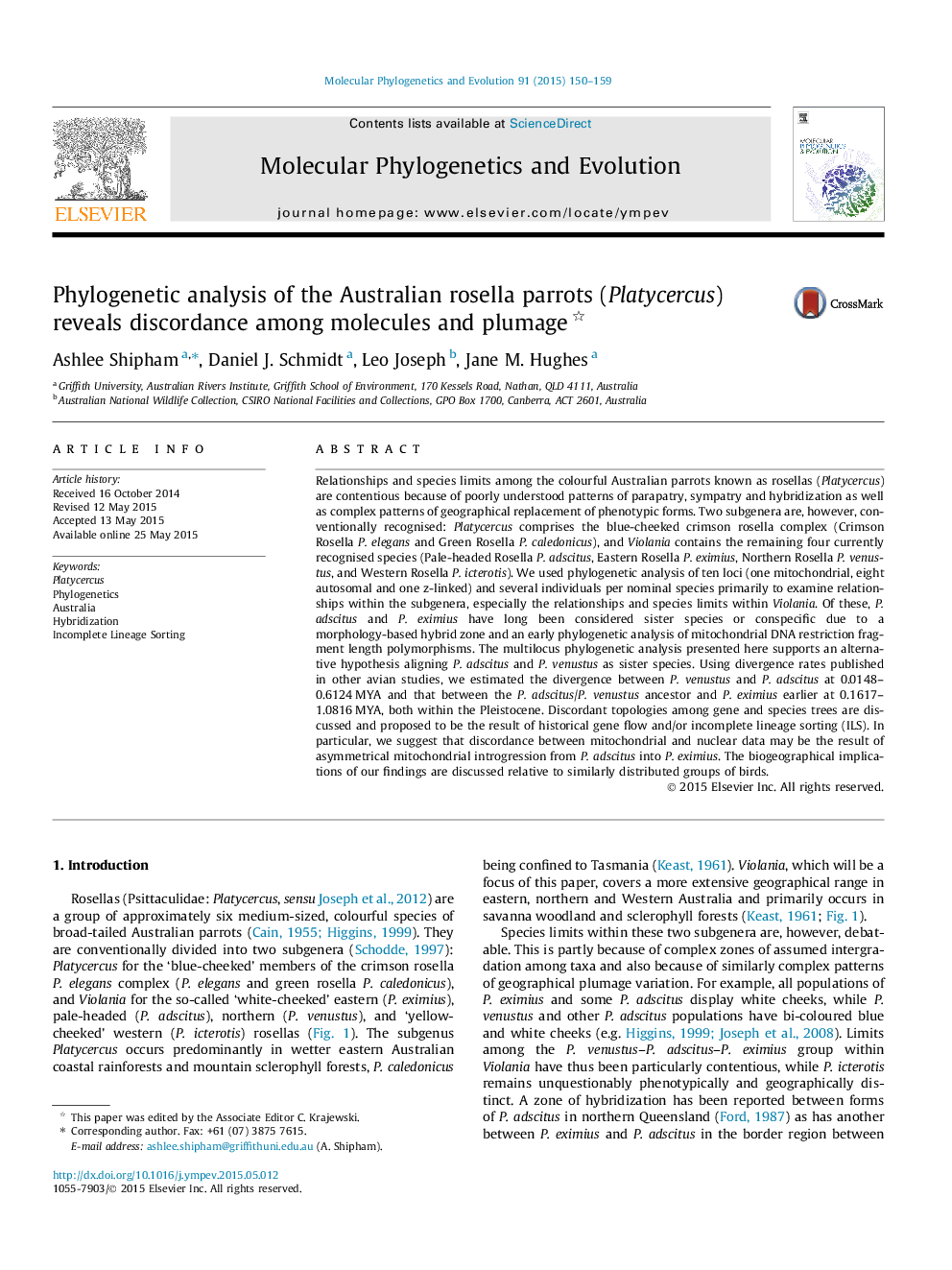| کد مقاله | کد نشریه | سال انتشار | مقاله انگلیسی | نسخه تمام متن |
|---|---|---|---|---|
| 2833786 | 1570805 | 2015 | 10 صفحه PDF | دانلود رایگان |

• We re-examine the phylogeny of Australian rosella parrots (Platycercus) using a multilocus approach.
• Species trees support an alternate phylogeny to that currently accepted.
• The mitochondrial DNA and overall species trees are incongruent.
• Species trees align P. adscitus and P. venustus as sisters, contrary to current understanding.
• We discuss ILS and hybridization as potential explanations for the incongruence.
Relationships and species limits among the colourful Australian parrots known as rosellas (Platycercus) are contentious because of poorly understood patterns of parapatry, sympatry and hybridization as well as complex patterns of geographical replacement of phenotypic forms. Two subgenera are, however, conventionally recognised: Platycercus comprises the blue-cheeked crimson rosella complex (Crimson Rosella P. elegans and Green Rosella P. caledonicus), and Violania contains the remaining four currently recognised species (Pale-headed Rosella P. adscitus, Eastern Rosella P. eximius, Northern Rosella P. venustus, and Western Rosella P. icterotis). We used phylogenetic analysis of ten loci (one mitochondrial, eight autosomal and one z-linked) and several individuals per nominal species primarily to examine relationships within the subgenera, especially the relationships and species limits within Violania. Of these, P. adscitus and P. eximius have long been considered sister species or conspecific due to a morphology-based hybrid zone and an early phylogenetic analysis of mitochondrial DNA restriction fragment length polymorphisms. The multilocus phylogenetic analysis presented here supports an alternative hypothesis aligning P. adscitus and P. venustus as sister species. Using divergence rates published in other avian studies, we estimated the divergence between P. venustus and P. adscitus at 0.0148–0.6124 MYA and that between the P. adscitus/P. venustus ancestor and P. eximius earlier at 0.1617–1.0816 MYA, both within the Pleistocene. Discordant topologies among gene and species trees are discussed and proposed to be the result of historical gene flow and/or incomplete lineage sorting (ILS). In particular, we suggest that discordance between mitochondrial and nuclear data may be the result of asymmetrical mitochondrial introgression from P. adscitus into P. eximius. The biogeographical implications of our findings are discussed relative to similarly distributed groups of birds.
Figure optionsDownload as PowerPoint slide
Journal: Molecular Phylogenetics and Evolution - Volume 91, October 2015, Pages 150–159